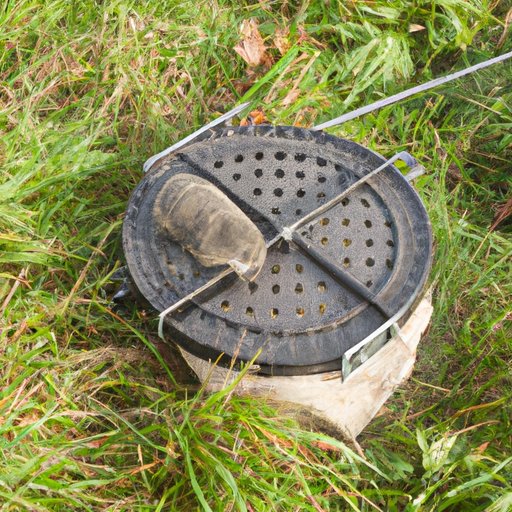
I. Introduction
Woodchucks, also known as groundhogs, are cute little creatures that can cause big problems for homeowners and gardeners. They burrow through lawns and gardens, eat vegetables and flowers, and can even dig under foundations and cause structural damage. If you are dealing with a woodchuck infestation, don’t worry! There are several methods you can use to get rid of them.
II. Natural Deterrents
Natural deterrents are a safe and eco-friendly way to repel woodchucks without harming them. Castor oil, predator urine, and spices like cayenne pepper and garlic are effective natural remedies. Castor oil is used to coat the plants, which makes the woodchucks’ food unappetizing. Predator urine works by creating a natural fear response in the woodchucks, while spices like cayenne pepper and garlic produce an unpleasant odor and taste.
III. Exclusion Fencing
Exclusion fencing is one of the most effective ways to prevent woodchuck infestations. It involves installing a durable fence that is buried at least one foot deep and rises at least three feet above the surface. The fence should be made of materials that are difficult to chew or climb, such as metal or cement. Regular maintenance, such as sealing gaps, checking for damage and reinforcing any weak spots, is crucial to keep the fence effective.
IV. Trapping
Live-trapping is a humane way to remove woodchucks. It involves setting a trap along their travel path and using bait to attract them inside. Once they are trapped, it is important to handle them carefully and release them far away from any residential or commercial properties. The traps should be checked frequently, ideally every 24 hours or less. Check with your local authorities as to the legal requirements for trapping and relocating woodchucks in your area.
V. Habitat Modification
Modifying your landscape to make it less woodchuck-friendly is an effective way to prevent future infestations. Removing cover, eliminating burrows, and reducing food sources are all ways to make your property less attractive to woodchucks. For example, removing any brush or debris will remove potential hiding places, while eliminating any fruit or vegetable garden can limit the available food supply. It is best to focus on preventive measures during the fall and winter months when woodchucks are inactive.
VI. Repellents
Chemical repellents, such as those containing ammonium soaps, garlic, or citric acid, are effective at repelling woodchucks. They work by producing an unpleasant odor or taste that the woodchucks find unappealing. Repellents should be applied onto the plants that are being targeted, and it is important to follow the instructions carefully to avoid harming the environment or other animals. Ensure to use appropriate personal protective equipment when handling chemical repellents.
VII. Sound and Light
High-frequency sounds and flashing lights are often used to scare woodchucks. These devices work by creating a disruptive environment that makes the woodchucks feel uncomfortable. They are best used in conjunction with other methods, such as fencing or trapping. However, it is important to note that some woodchucks may become accustomed to these devices over time, and they may not be effective in the long run. Sound and light devices may also bother neighbors who live nearby and may not be appropriate for residential areas.
VIII. Professional Control
If you are unable to get rid of the woodchucks on your own or the infestation is severe, you may need to seek professional control services. Professional pest control services have the knowledge and experience to safely and effectively remove the woodchucks. They use appropriate techniques, which may involve live trapping and relocation, or the use of chemical products. When choosing a professional pest control service, it is important to choose a licensed and insured company, ask for references, and compare quotes.
IX. Conclusion
Getting rid of woodchucks requires early intervention and a multi-pronged approach. Natural deterrents, exclusion fencing, trapping, habitat modification, repellents, sound and light devices, and professional control services are all effective methods. Depending on the severity of the infestation, a combination of these methods may be required. Additionally, taking preventive measures, such as removing vegetation, sealing entry points, and covering weak spots, is crucial. Remember to use humane methods, follow proper safety precautions when handling chemicals, and consult with local regulations for trapping and disposing of wildlife.
By taking early action and using the right methods, you can effectively eliminate woodchuck infestations and restore your property to its previous state.




